- Established 1982 -HOME: www.hiltonpond.org
THIS WEEK at HILTON POND Subscribe for free to our award-winning nature newsletter (Back to Preceding Week; on to Next Week) |
THAT'S A LOT OF BIRDS! If you like banding birds and observing a variety of avifauna up close, Hilton Pond Center was a good place to be in October 2020. We had an exceptional 31 days with 450 individuals banded from an amazing 52 species--one of our best and most diverse monthly tallies since the 1990s. (NOTE: For a full list of species banded and how many we handled of each, please scroll to the bottom of this page.) In October we also added nine birds to the 2020 Hilton Pond "Yard List," bringing this year's total to 106 species seen or heard at the Center. This shattered our annual record of 96 set in 2008 and comprised 60% of the 171 species seen on or over the property in the past 39 years, and we still have two months to go!
All text, maps, charts & photos © Hilton Pond Center October 2020 began with the capture of two immature male Ruby-throated Hummingbirds (RTHU), equaled by two more on 2 Oct and then one young RTHU each day on the 3rd, 4th (a female), 6th, and 7th to end the year. That final hummer of the season was an immature female (that's her, above, with thumb for scale). We've never had a ruby-throat after 18 October, so our special hummer banding tools can be packed away for this year--unless, of course, we get any of those vagrant winter hummingbird species that occasionally show up in the eastern U.S. during winter.
All text, maps, charts & photos © Hilton Pond Center Incidentally, the penultimate RTHU on 6 October was a young male (above) bearing an exceptionally dark throat with greenish-black feathers and two iridescent red ones. It is quite common come autumn to see immature male Ruby-throated Hummingbirds with light-to-dark streaking and one or more ruby-colored gorget spots, but this particular individual was the most heavily streaked of all 2,828 hatch-year males we've captured since 1984. (No, he's not a closely related Black-chinned Hummingbird, which would have purple gorget feathers instead of red.) Those eight October ruby-throats rounded out 2020 with a total of 289 banded--our third-best hummingbird season ever, exceeded only by 298 in 2017 and a phenomenal high of 373 in 2016. (This year we also had 48 RTHU returns from previous banding seasons, our fifth-best total in that category; 2017--the season that followed our record-breaking year for new bandings--was predictably tops with 62 returns from 2016 or earlier.)
All text, maps, charts & photos © Hilton Pond Center Along with two Ruby-throated Hummingbirds, the first day of October also brought an immature White-eyed Vireo (WEVI, above), whose grayish-brown eye belied its age. By next year its iris should be the bright crystalline white that gives the species its name. In WEVI, as with nearly all vireo species, sexes look alike. This is the second-most common vireo banded at Hilton Pond Center with 334 on the books since 1982, exceeded by Red-eyed Vireos with 381. We've also captured 40 Yellow-throated Vireos and two much rarer Philadelphia Vireos.
All text, maps, charts & photos © Hilton Pond Center To be expected among fall migrants at Hilton Pond Center are the Wood Warblers (Parulidae), of which 38 species might be considered "eastern" warblers. Thorough the years we've caught 35 of these, missing only Kirtland's, Cerulean, and Mourning Warblers. One of the more common species is Black-throated Blue Warbler (BTBW), named for the unmistakable plumage of the male (above). We've banded 220 BTBW since 1982; one captured this year on 30 October was so late it was red-flagged by eBird, the on-line database of bird observations coordinated by Cornell Laboratory of Ornithology.
All text, maps, charts & photos © Hilton Pond Center Of the 11 Black-throated Blue Warblers banded in October 2020, six were females (above) that looked nothing like their mates. In fact, the two sexes are so different early ornithologists thought they were separate species. The clue for identifying the relatively plain olive-colored female is her white wing spot; unfortunately, that field mark is often much more inconspicuous than depicted in our photo. In that case, look for the broken eye ring and pale superciliary line (above the eye).
All text, maps, charts & photos © Hilton Pond Center An adult male Magnolia Warbler (MAWA, above) banded this month was an easy identification. Although this bird's bright rump might be confusing at first and make one think "Yellow-rumped Warbler"--the wide white band across the tail feathers is diagnostic. Immature MAWA are much more nondescript, but they, too, show that unique white tail pattern. This species is the third most common Wood Warbler at the Center, with 438 banded in 39 years.
All text, maps, charts & photos © Hilton Pond Center And speaking of easily identified and aptly named warblers, the photo above depicts an adult October male Black-throated Green Warbler (BTNW)--of which we've banded only 24 at Hilton Pond Center since 1982. This species nests in the northeastern U.S. and eastern Canada and down the Appalachians into north Georgia; interestingly, there is a disjunct population breeding in coastal North Carolina
All text, maps, charts & photos © Hilton Pond Center The warbler above came as a bit of a surprise when we netted it at the Center in October, and we had to think for a minute to remember what it was. The reason: We've banded just 129 of this species in 39 years and 91% of those have been in spring migration--when they’re in breeding attire and there are no young birds in immature plumage. Although we don't recollect catching an individual with so much yellow on head and breast, the yellow-orange legs prompted us that this was an immature Blackpoll Warbler (BLWA). Note also the prominent white wingbars, dark eye line, and speckled crown.
All text, maps, charts & photos © Hilton Pond Center The final warbler of note for October 2020 was another we seldom see or capture, with only 25 on the books since 1982: Blue-winged Warbler (BWWA). This species is sometimes misidentified as the similarly colored Prothonotary Warbler, but wing bars, dark eye line, and narrowly pointed bill set it apart. Immature BWWA like the one in our photo are close to being monomorphic and are difficult to sex; the bright yellow forehead and other subtle plumage differences on this bird indicated male.
All text, maps, charts & photos © Hilton Pond Center Through September 2020, all but one of the five common "spot-breasted thrushes" had been banded at Hilton Pond Center. Missing was the Hermit Thrush (HETH), which never shows here until mid-October. Like clockwork, we got our first autumn HETH on the 17th. The month also brought 12 Gray-cheeked Thrushes and a whopping 38 Swainson's Thrushes. (One of the latter was so late on 30 October it got flagged by eBird.) So how does one differentiate a Hermit Thrush from its spot-breasted cousins? Look for the rusty tail (as above) contrasting with a brownish back AND for the the HETH habit of frequent tail bobbing. Oh, and if you see a spot-breasted thrush like this in mid-winter in the Carolina Piedmont, you can rule out the others because they are true Neotropical migrants that bail out, leaving only Hermit Thrushes to spend the winter here.
All text, maps, charts & photos © Hilton Pond Center All those spot-breasted thrushes are in the same family (Turdidae), as are some other familiar species--Eastern Bluebird (EABL) for one. We caught five EABL at the Center in October, all at the same time in the same net; this suggested they were family members. (In fact, our records showed that two of the males were siblings, banded as nestlings in a box in 2019.) The one in our photo above had spots on its upper breast and wings, indicating it was still quite young and therefore the product of an extremely late nest. (Bright blue coloration in his wing feathers told us he was a male.) It's worth noting those five brown spot-breasted thrushes like the Hermit Thrush bear spots as adults, while bluebirds are spotted as juveniles but unspotted when mature. Even so, virtually all members of the Turdidae might be thought of as "spot-breasted" at one point or another in their lives.
All text, maps, charts & photos © Hilton Pond Center To take that spot-breasted concept one species further, if you've ever seen a baby American Robin (AMRO) you likely noticed it had spots. Yes, robins are also in the Turdidae and--like some of their cousins--have juvenal breast spots that disappear with maturity. The AMRO above we caught at Hilton Pond in October was a hatch-year youngster but had already acquired the spotless orange breast of an adult. Its almost-black head indicated male; females typically have heads that are more gray.
All text, maps, charts & photos © Hilton Pond Center Although American Robins were the largest birds we banded in October, this month we also handled two far-smaller species when both kinglet species arrived at Hilton Pond. Ruby-crowned (RCKI) were more abundant--11 banded--than two somewhat showier Golden-crowned (GCKI, above). RCKI are olive-green with a pair of wingbars and a large white broken eye-ring; the male's red crest is often obscured. GCKI have a yellow crown bordered by black stripes and males like the one in our photo above reveal an orange topknot when aroused. Kinglets are tiny birds that tip the scale at about five grams--the weight of a nickel. Nonetheless, each autumn they make the long trip from Canada to as far south as Florida--even to southern Mexico in the case of RCKI--and return to their northern breeding grounds come spring.
All text, maps, charts & photos © Hilton Pond Center There was news out of Canada this fall that seed production had been particularly sparse on trees and other plants. Birders began quaking with excitement that such food scarcity would drive many non-obligate migrant birds to fly south, meaning the "winter finches" and other species could be expected in abundance. The initial sign of this phenomenon at Hilton Pond Center was the arrival on 2 October of a Red-breasted Nuthatch (RBNU, above), a bird we don't see locally most winters. (We've banded just 20 since 1982.) This first RBNU was a male--note his glossy black cap--followed the next day by a much paler immature female with cap of gray. Red-breasted Nuthatches have a keel-shaped lower mandible (see photo) that allows them to pry bark chips from pines and other conifers as they seek torpid insects, spiders, and other invertebrates. That same bill works just as well at grabbing suet chunks and cracking open sunflower seeds at our backyard feeders.
All text, maps, charts & photos © Hilton Pond Center In a nice comparison we also caught a male White-breasted Nuthatch (WBNU, above) on 8 October. No color on breast, no big eye stripe, and a longer, straighter bill separates this species from its red-breasted congener. To our knowledge, all the WBNU at Hilton Pond are year-round residents that do not migrate. Like other nuthatches, they are cavity nesters; the species prefers older hardwood forests and rarely uses nest boxes erected for bluebirds. (NOTE: We also see and band a few diminutive Brown-headed Nuthatches at the Center, although local numbers dropped drastically in the mid-1990s after a neighboring farmer clear-cut 60-plus acres of Loblolly Pines that were their preferred habitat.)
All text, maps, charts & photos © Hilton Pond Center Finally, on 17 October we captured the species we had been waiting for after we learned of Canada's seed crop failure. A cluster of five Pine Siskins (PISI, above, at water feature) entered one of our sunflower seed traps--the first we had seen or banded since a "paltry" six last winter. "Paltry," of course is a relative term, because in a true irruption year one expects quite a few more than a half-dozens siskins. Would 2020 be one of those years? Well, on 20 October we banded 12 more siskins, then 30 on the 21st, and 28 more the next day. Sounds irruptive to us, but once again eBird red-flagged us for an unusual species in unusual numbers at an unusual location at an unusual time of year!
All text, maps, charts & photos © Hilton Pond Center To make a long story short, by 31 October we had captured and banded 207 Pine Siskins at the Center--already our eighth best total for the species since 1982! Knowing these thin-billed birds were famous for flocking to thistle feeders, we put out a fresh batch of expensive Nyger seed, but they never touched it, preferring instead to pick through black sunflower scraps left behind by our usual assemblage of Northern Cardinals and House Finches. There was little doubt Pine Siskins had arrived en mass, but what about the Purple Finches and maybe Evening Grosbeaks that were expected to accompany them? Alas, neither of those species arrived in October, so we guess we'll just have to keep our seed feeders well-stocked to learn whether the "Finch Winter" of 2020 comes to full fruition. AND OTHER NATURE STUFF Although birds and bird banding are a primary emphasis at Hilton Pond Center, we remain interested in all aspects of natural history--hence the commentary below about other nature happenings in October 2020.
All text, maps, charts & photos © Hilton Pond Center Bird banders look toward autumn with mixed feelings. True, it's when all those northern migrants fly through on their way to the Neotropics, but it's also when Mother Nature tells trees to shut down for winter, and you KNOW what THAT means: Fall color. And falling leaves. Lots and lots and lots of falling leaves. On 24 October--with a little wind to help--big trees above our net lanes were dropping foliage at a prodigious rate, and many of those castoffs seemed to head straight for our mist nets. Thus, we spent most of the day extracting brown or yellow leaves tumbling fast and frequent from a Shagbark Hickory, Flowering Dogwoods, a Pecan, Hackberries, and Eastern Redbuds. Many leaves were dry and crinkly with all sorts of jagged edges and broken petioles to grab the mesh of the nets. By day's end our banding results included ten jillion leaves extracted, and just two fall migrant birds banded.
All text, maps, charts & photos © Hilton Pond Center Regardless of tedium and frustration associated with dead leaf extraction, we admit some falling foliage is worth stopping to observe, including delicate deciduous needles of the Baldcypress--a coniferous tree that isn't evergreen. Although Baldcypress, Taxodium distichum, is typically associated with coastal swamps, it grows well (and natively) in the Carolina Piedmont--especially when planted on the margin of an inland impoundment like Hilton Pond. Several of these stately trees thrive around the pond margin where we planted them as sapling whips nearly 30 years ago. The biggest ones now produce cones that, in turn, have sprouted to give us several younger trees 4'-6' tall.
All text, maps, charts & photos © Hilton Pond Center At Hilton Pond Center we have a single old specimen of Trifoliate Orange, Citrus (or Poncirus) trifoliata, named for its three-part compound leaf and the fruit it produces. A non-native from Korea and China, this particular shrub was planted long ago by folks who owned the property before we bought it in 1982. It's an impressive plant, with stems green all the way to the ground, armored by stout sharp, pain-producing spines (see photo above). Although we've been watching this shrub for years and have seen it flower in several springs, this is the first year it bore fruit--two-inch orange balls filled with seeds and not much pulp. (The fuzzy fruit is extremely tart but can be used to make a refreshing drink.) Since Trifoliate Orange will escape from cultivation and become invasive under optimal conditions, we collected all this year's fruits and used them to make potpourri for the Center's old farmhouse.
All text, maps, charts & photos © Hilton Pond Center Marbled Orb Weaver, Araneus marmoreus, is one of those arachnids in which females spin large circular webs. (She’s related to the more commonly seen Black-and-Yellow Orb Weaver, Argiope aurantia, that also occurs at Hilton Pond Center.) The spider in our photo above is indeed a female; her swollen abdomen undoubtedly means she is close to producing a silken case in which lots of eggs or little spiderlings will spend the winter, emerging next spring. Abdominal markings in this species are unique to each individual, so you could have an entire collection of photos illustrating variations on the theme. And check out her eight red and black and white legs! Stunning contrast! Like all spiders, this one—also called “Pumpkin Spider” because its body is sometimes bright orange—has venom very effective at paralyzing insect prey, but even if you somehow could coerce her into biting you it would not have noticeable effect.
All text, maps, charts & photos © Hilton Pond Center At most locations in the Carolina Piedmont many of the last plants to bloom in autumn are composites--members of the Sunflower Family (Asteraceae). Here at Hilton Pond Center we have a couple species of fall asters--one blue and one white--but our pride and joy is a solitary specimen of the federally endangered Schweinitz's Sunflower, Helianthus schweinitzii. Some years it gets chewed back by White-tailed Deer and in bad summer droughts it browns and withers nearly to the ground. This year it defied the evils of 2020 and had one of its best blooms yet (above). Oddly, however, instead of sending flower stalks eight or ten feet straight up as usual, the stems toppled over into a thicket-like mass cascading across the trail.
All text, maps, charts & photos © Hilton Pond Center The reason Schweinitz's Sunflower is endangered is because its habitat is endangered. The plant is a relict of what was once a vast Piedmont Prairie--hundreds of square miles of savanna and grassland that flourished where the Greater Charlotte area now sprawls. These days the plant occurs only where it is protected and, strangely enough, along "prairie-like" roadsides and power line rights-of-way where mowing occurs but herbicides are not used. It's sad to know a major ecosystem like the Piedmont Prairie is essentially gone, but we're pleased Hilton Pond Center is home to a thriving specimen of this splendid yellow sunflower. All text, maps, charts & photos © Hilton Pond Center Image post-processing via DeNoise AI, Sharpen AI, and other Topaz Lab tools
Checks also can be sent to Hilton Pond Center at: All contributions are tax-deductible on your Don't forget to scroll down for Nature Notes & Photos, |
|---|
|
"This Week at Hilton Pond" is written and photographed by Dr. Bill Hilton Jr., executive director of Hilton Pond Center for Piedmont Natural History
|
|
|
Please refer "This Week at Hilton Pond" to others by clicking on this button: |
|


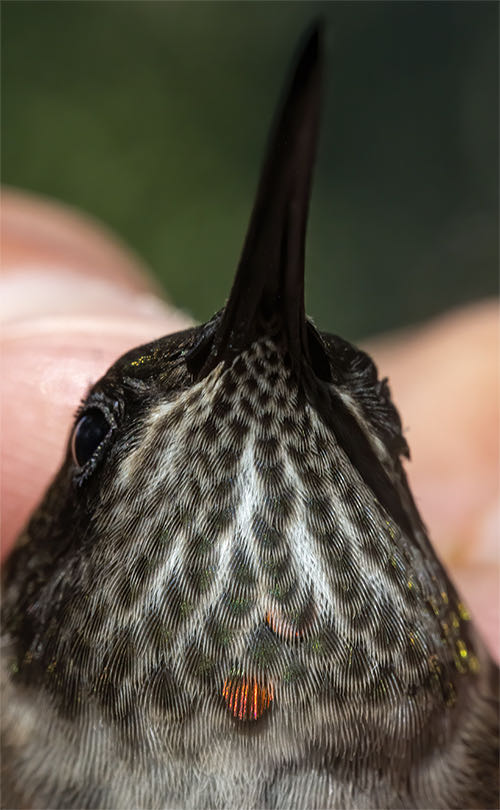
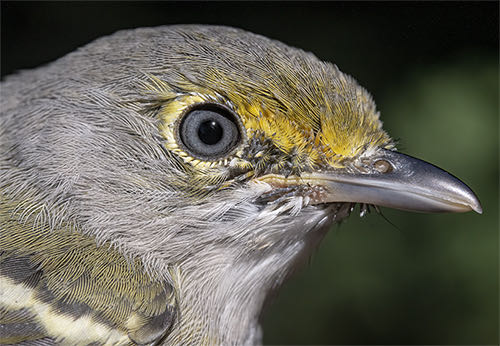
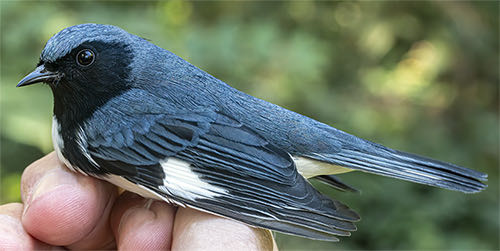
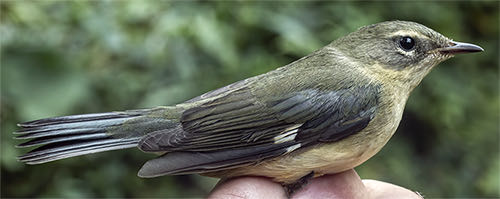
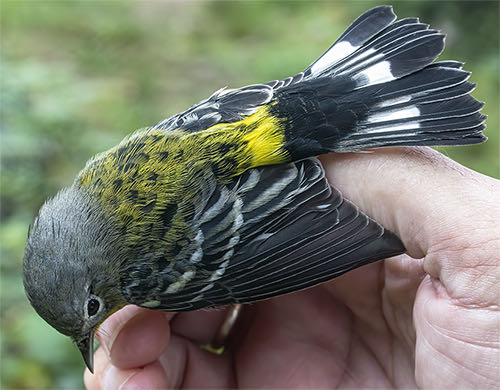
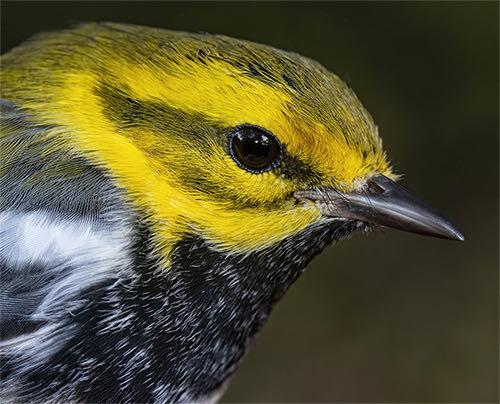
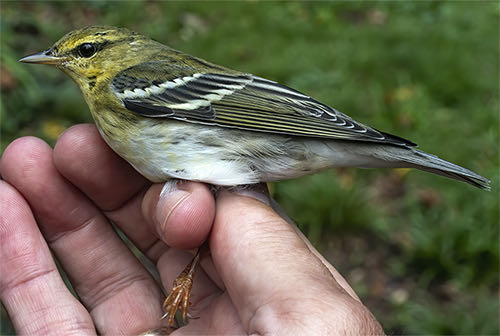
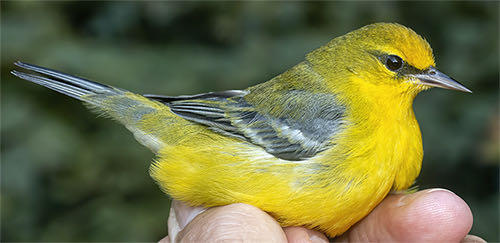
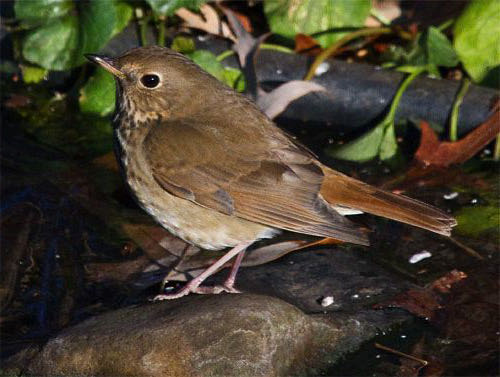
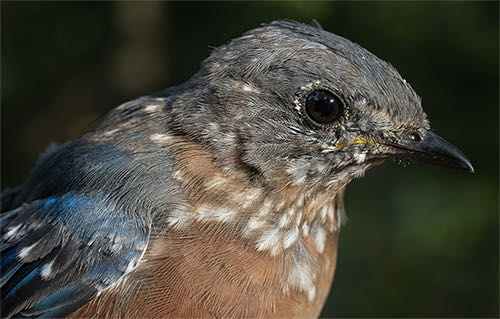
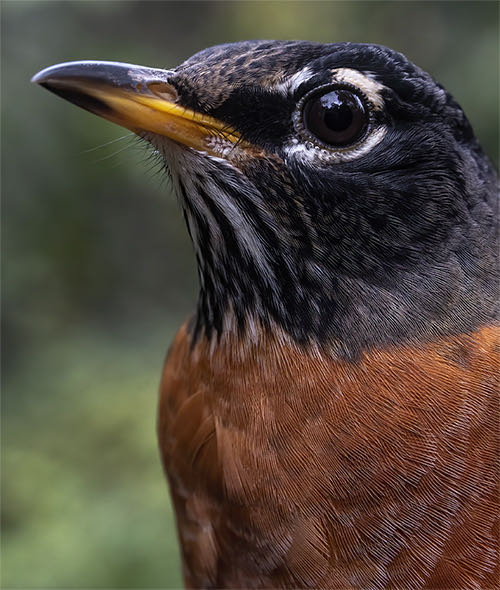
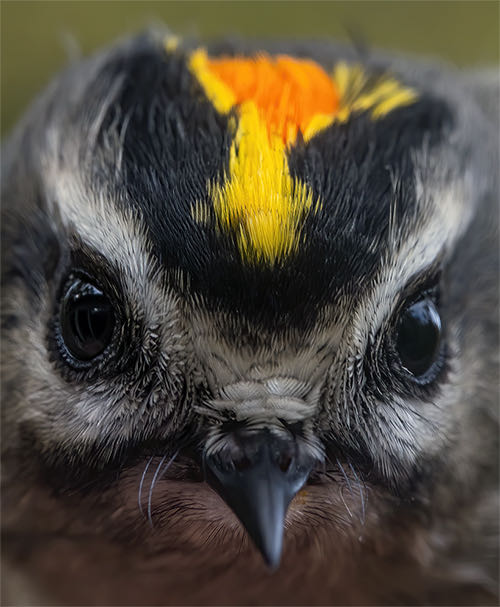
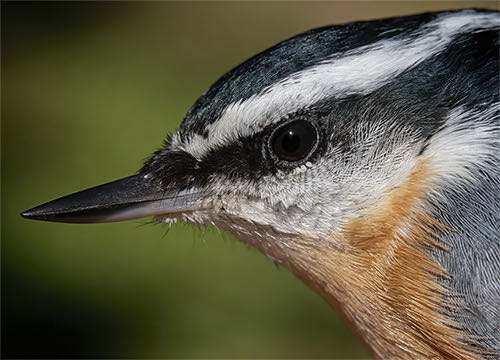
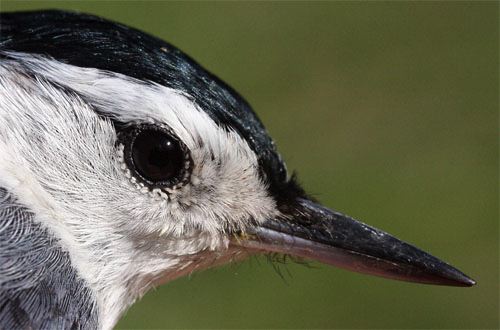

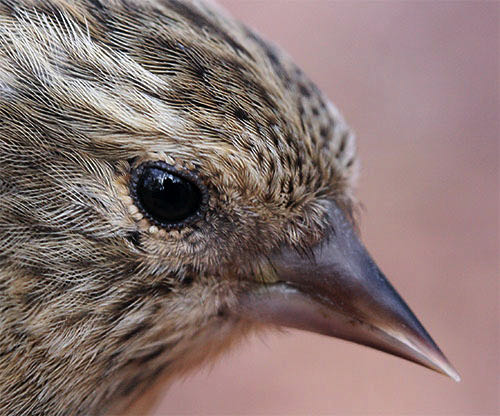
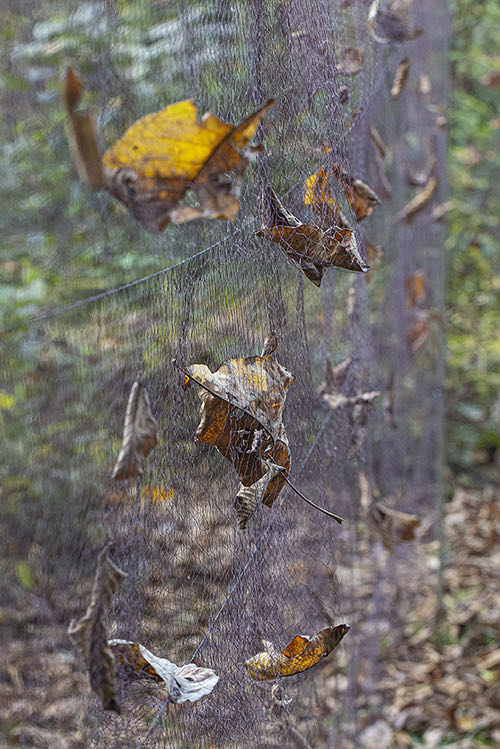
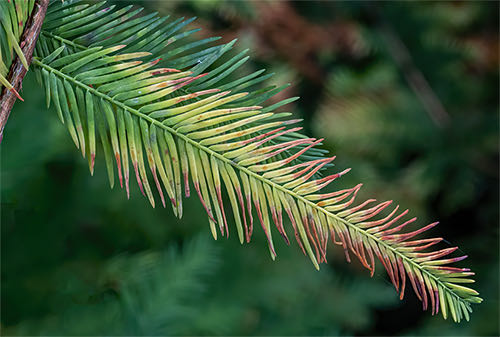
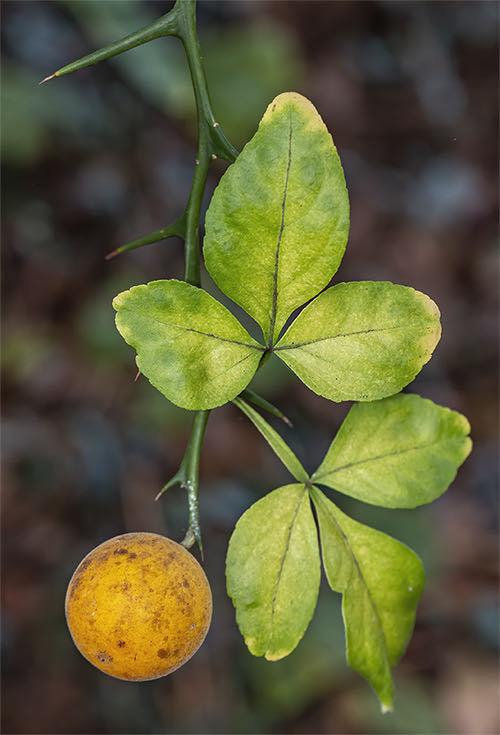

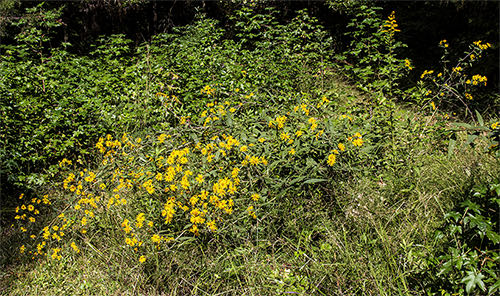
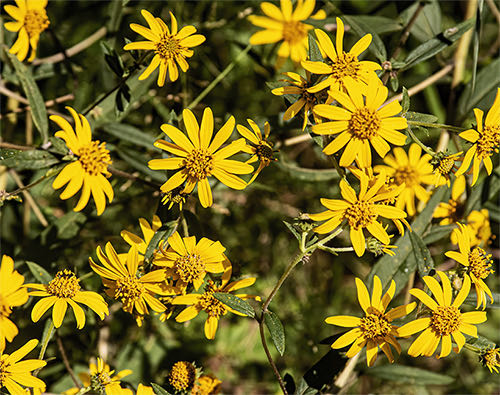










 Please report your
Please report your Oct 15 to Mar 15:
Oct 15 to Mar 15: